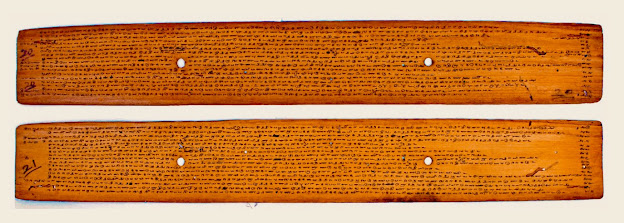Sangam Period
Sangam Period
The Sangam Period is Roughly time Period Between 3rd Century BCE and 3rd Century AD. While the Northern Part of India was Flourishing under the MAURYAN Empire, the Southern part of the subcontinent was equally Growing under the Rule of CHERA , PANDYA and CHOLA Empires during the Sangam Period.
The Sangam Period has been named after the Sangam academies held during that period that flourished under the royal patronage of the Pandya kings of Madurai. These literary works are one of the earliest specimens of Tamil literature.
Palm Leaf Tamil Manuscript of Sangam Era
According to folklore and the Sangam Literature available there were three Sangams (Academy of Tamil poets) held in the ancient South India popularly called Muchchangam.
The First Sangam, is believed to be held at Madurai, attended by gods and legendary sages. No literary work of this Sangam is available .
The first Sangam has roots in the Hindu deity Shiva , his son Murugan, Kubera as well as 545 sages including the famed Rigvedic poet Agastya. The first academy, states the legend, extended over four millennia and was located far to the south of modern city of Madurai, a location later "swallowed up by the sea" .
The Second Sangam was held at Kapadapuram, only Tolkappiyam survives from this.
The Third Sangam was also held at Madurai. A few of these Tamil literary works have survived and are a useful sources to reconstruct the history of the Sangam period.
Ancient South Indian Subcontinent During Sangam Period
The Ancient South Indian Subcontinent During the Sangam Period was majorly Ruled
by Three Kingdoms CHERA , PANDYA and CHOLA.
Chera Kingdom:
The kingdom of the Cheras comprised the modern Western Tamil Nadu and Kerala, along the western or Malabar Coast of southern India. Their proximity to the sea favoured trade with Africa .The Chera country was geographically well placed to profit from maritime trade via the extensive Indian Ocean networks. Exchange of spices, especially black pepper, with Middle Eastern and Graeco-Roman merchants.
The political structure of the chiefdom was based on communal holding of resources and kinship-based production. The authority was determined by "the range of redistributive social relationships sustained through predatory accumulation of resources".
The Cheras are referred to as Kedalaputo (Sanskrit: "Kerala Putra") in the Emperor Ashoka's Pali edicts.
Chera Coin
Chera Used to had Trade Good Trade Relations with Roman Empire. Excavations at Karur yielded huge quantities of copper coins with Chera symbols such as the bow and arrow, Roman amphorae and Roman coins.
Internal and external trade was well organised and active. Evidence from both archaeology and literature speaks of a flourishing foreign trade with the Yavanas (Greeks). The port city of Puhar on the east coast and Muziris on the west coast of south India were emporia of foreign trade, where huge ships moored, offloading precious merchandise. This trade started to decline after the 2nd century CE and the direct contact between the Roman empire and the ancient Tamil country was replaced by trade with the Arabs and the Auxumites of East Africa. Internal trade was also brisk and goods were sold and bartered. Agriculture was the main profession of a vast majority of the population.
Credits and References:
Varad Udgirkar
TY Metallurgy
https://www.drishtiias.com/to-the-points/paper1/sangam-age-1
https://www.ijcrt.org/papers/IJCRT1872373.pdf
https://en.wikipedia.org/wiki/Sangam_literature
https://en.wikipedia.org/wiki/History_of_Tamil_Nadu
https://en.wikipedia.org/wiki/Chera_dynasty
Image Resources:
https://upload.wikimedia.org/wikipedia/commons/6/66/Palm-leaf_manuscript%2C_ancient_and_medieval_Tamil_literature_%28partly_Sangam_era%29%2C_Languages_in_the_manuscript_Tamil_Telugu_Sanskrit%2C_Scripts_Grantha_Telugu_Tamil%2C_Hindu_Shaivism_monastery%2C_UVSL_589.jpg
https://upload.wikimedia.org/wikipedia/commons/4/46/South_India_in_Sangam_Period.jpg
https://upload.wikimedia.org/wikipedia/commons/9/97/Chera_coin_%28ancient_south_India%29_%28cropped%29.jpg
NOTE :-
This blog is meant for Educational Purpose only .We do not own any Copyrights related to images and information , all the rights goes to their respective owners . The soul purpose of this blog is to Educate, Inspire, Empower and to create awareness in the viewers. The usage is non-commercial(Not For Profit) and we do not make any money from it.
FOLLOW US ON:-
INSTAGRAM :
https://bit.ly/coep_blogs_insta
LINKEDIN:
https://bit.ly/coep_blogs_linkedIn
YOUTUBE:-





Comments
Post a Comment